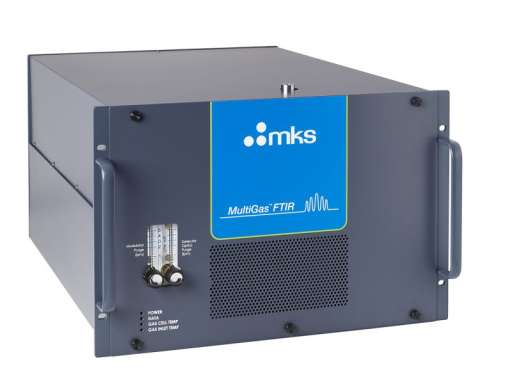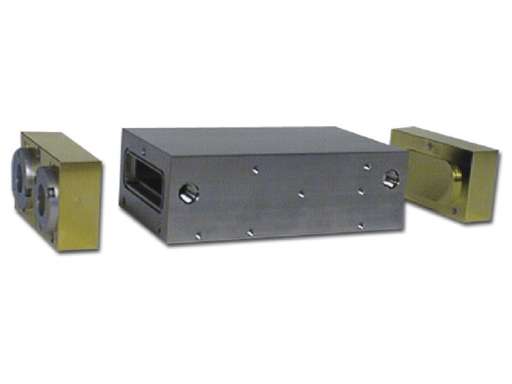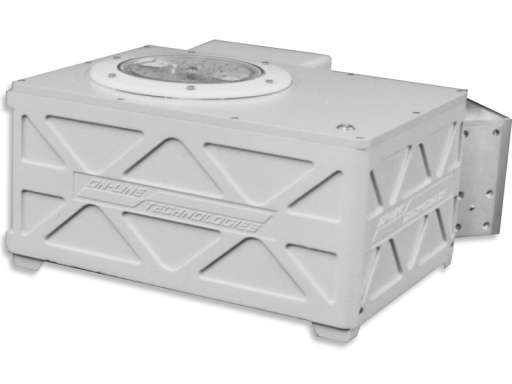FTIR spektrometrar
MultiGas™ 2030 FTIR Continuous Gas Analyzer
FTIR-based analyser for multiple gas species
The MultiGas™ 2030 is an FTIR based analyzer capable of ppb to ppm sensitivity for multiple gas species in a variety of applications, such as stack emissions monitoring, process monitoring, ambient air monitoring, purity monitoring, and selective catalytic reduction performance monitoring.
It can perform analysis in gas streams that contain up to 40% water, and can simultaneously analyze and display more than 30 gases. With permanently stored calibration spectra, the need for costly gas cylinders is reduced.
Key features
- Simultaneous analysis and display of more than 30 gases
- 10-100 ppb sensitivity for many toxic gases without moisture removal
- Easily transportable from site to site, with set up time in minutes
- Permanent calibrations eliminates the need for costly gas cylinders
- Patented, linearized detector response assures all instruments maintain the same calibration
- User-friendly software for simple operation with minimal training
Applications
- Stack monitoring (environmental compliance)
- Process monitoring, development and optimization
- Ambient air analysis (industrial hygiene)
- Bulk gas purity analysis
- Combustion emissions monitoring
- SCR – selective catalytic reduction performance monitoring
2102 Process FTIR Spectrometer
The MultiGas 2030 Analyzer is composed of a 2102 Process FTIR Spectrometer, our patented, high-optical-throughput sampling cell, applications-specific analysis software, and an instrument independent quantitative spectral library. The 2102 Process FTIR Spectrometer is compact and rugged. Capable of operating at spectral resolutions up to 0.5 cm-1, it is the fastest, most sensitive and stable process FTIR available. In addition, it can operate in hostile environments with a high degree of immunity to vibration and temperature changes. An advanced, high-speed data processing system is standard, and provides low-noise infrared spectra for analysis.
Multi-pass Gas Cell
This spectrometer is coupled to a patented low volume (200 mL) multi-pass gas cell with a 5.11 meter effective pathlength. The patented design of this cell incorporates aspheric, aberration-correcting mirrors which provide more than twice the optical throughput of a conventional multipass gas cell. Alternatively, a single-pass gas cell can be used for corrosive gases or strongly-absorbing gases at high concentrations. Either cell can be operated from ambient temperature to 191°C.
Spectral Analysis
The MultiGas 2030 analyzer features robust quantitative analysis software, which can analyze and report concentrations for dozens of compounds simultaneously. The software, which operates on a personal computer, performs automatic corrections for gas temperature and pressure variations, which are measured directly by the analyzer. Samples can be acquired and analyzed in less than a second, making transient analysis possible.
During data collection the MultiGas software continuously acquires and processes spectra while computing the concentrations of the gases that are selected in the setup. Display formats include concentration histories in graphical and tabular formats, the measured spectrum and spectral residuals. The residual spectrum can be utilized to visually determine error in the analysis, making QA/QC checking easy and straight forward to accomplish. The spectral residuals represent the “left-over” spectral information once all the reference spectra have been accounted for. Once spectra have been collected and saved, these spectra may be reprocessed at any time using the same or different calibration sets.
Instrument Independent Calibration
The MultiGas software features multi-point calibration curves that provide a dynamic range up to 9 orders of magnitude (ppb to 100%). Calibrations for many species are provided with the instrument, and additional calibrations can be generated by the user from gases of known concentration. Utilities in the MultiGas software verify the performance of each instrument, which allows a calibration generated on one MultiGas to be used on any other MultiGas without alteration.



